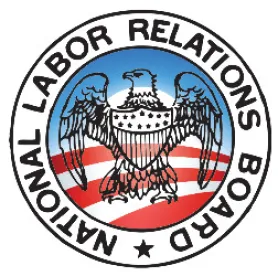The National Labor Relations Board (NLRB) is currently seeking public comment on its proposed rule change that would expand the scope of joint-employer liability under the National Labor Relations Act (NLRA). 1 If implemented, the proposal would return to the Obama-era NLRB joint-employer liability rule.
Joint employer liability is a principle that allows a related, nominal entity to be assessed liability of a primary employer based on the functional relationship between the two entities. The current rule published in 2020 allows for joint-employer liability when one related, nominal entity “possesses and exercises…substantial direct and immediate control” over another primary employer’s essential employment terms like “wages, benefits, hours of work, hiring, discharge, discipline, supervision, and direction.”2 The proposed rule would expand the scope of who is considered a joint-employer by also analyzing “evidence of reserved and indirect control” by a related, nominal entity without actually exercising that control over essential employment terms of the primary employer.3
For example, under the current rule, a national fast-food restaurant franchisor that contractually possessed but did not exercise control over the work schedule of a local franchisee’s employee seeking overtime wages would most likely not be considered a joint-employer and, therefore, not liable to the employee for disputed wages. Under the proposed rule, if the national franchisor possessed the ability to control the work schedule of the local franchisee’s employee based on terms of their franchise agreement, the national franchisor potentially could be considered a joint-employer and, therefore, liable to the local employee for overtime wages, despite not actually exercising the authority.4 Other factors would be relevant in the analysis, but the contract terms could be strong evidence of a joint employer relationship.
In a staffing agency context, under the current rule, if a software company hired a staffing agency to provide a 6-month temporary worker to the company and the staffing agency maintained control over workplace decisions such as the employee’s hiring/firing and schedule, then the software company likely would not be considered a joint-employer. Under the proposed rule, if the software company’s contract with the staffing agency reserved the ability to control those essential terms of the temporary agency’s employees such as wages and benefits, then the software company may be considered a joint-employer and, therefore, liable in the event of a dispute — even if the company did not exercise the authority.
The proposal would resurrect the 2015 Browning-Ferris Industries of California standard, which held that employers could be considered joint-employers if they “[r]eserved authority to control terms and conditions of employment, even if not exercised . . .”5 Under the Trump administration, the NLRB issued the current rule to overturn the impact of Browning-Ferris Industries of California. The new proposed NLRB rule will have the effect of reinstating this prior NLRB standard.
If the proposed rule is implemented, businesses will need to reexamine their operational relationships and contract terms with third party labor agencies, nominally related entities and franchise systems in order to determine if they would qualify as joint-employers under the new rule. The proposal may expose employers to additional liability that was unintended based on their contracts. For employees and unions, the rule proposal could also bring additional entities (the new joint-employers) to the collective bargaining table.
The NLRB will be accepting comments on the rule proposal until Nov. 7, 2022.
Joe Murphy also contributed to this article.
FOOTNOTES
1 Standard for Determining Joint Employer Status, 87 Fed. Reg. 54641 (Sept. 7, 2020), https://www.federalregister.gov/documents/2022/09/07/2022-19181/standard-for-determining-joint-employer-status.
2National Labor Relations Board, Fact Sheet Joint Employer Final Rule (2020), https://www.nlrb.gov/sites/default/files/attachments/basic-page/node-7581/fact-sheet-joint-employer-final-rule.pdf.
3 Standard for Determining Joint Employer Status, 87 Fed. Reg. 54641 (Sept. 7, 2020).
4 See Joyce Mazero et. al., Drawing Lines in Franchisor Support-Is It Necessary and Where Are the Lines to Draw in Today's Joint-Employment Environment?, 38 Franchise L.J. 327, 331 (2019) (exploring changing standard’s impacts on franchise/franchisee relationships).
5 Browning-Ferris Indus. of California, 362 NLRB 1599, 1600 (2015) (emphasis added).




 />i
/>i

